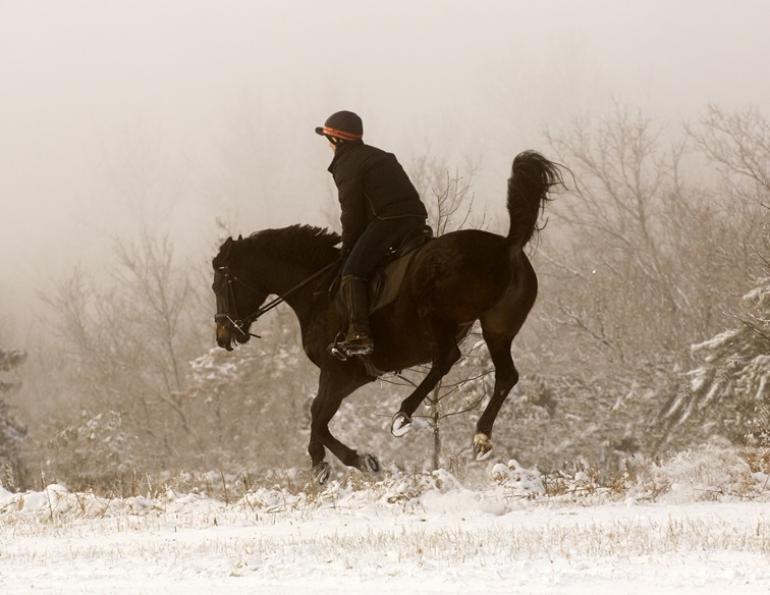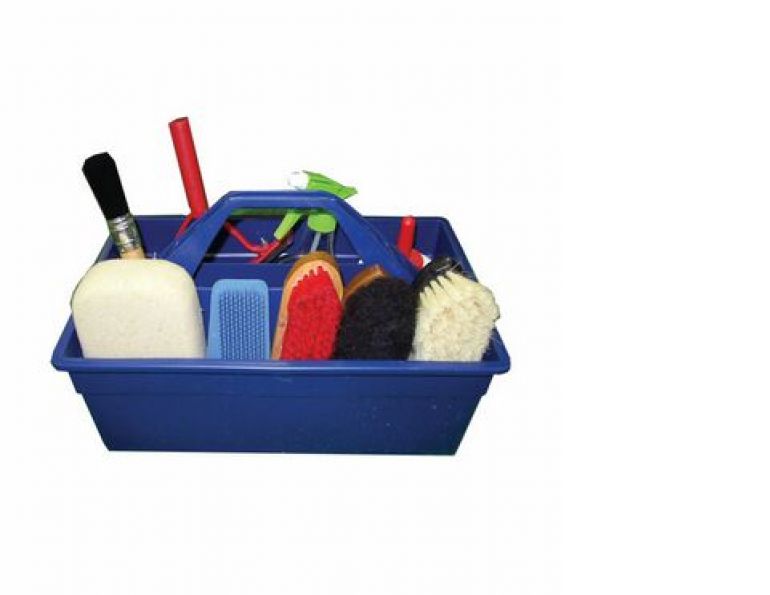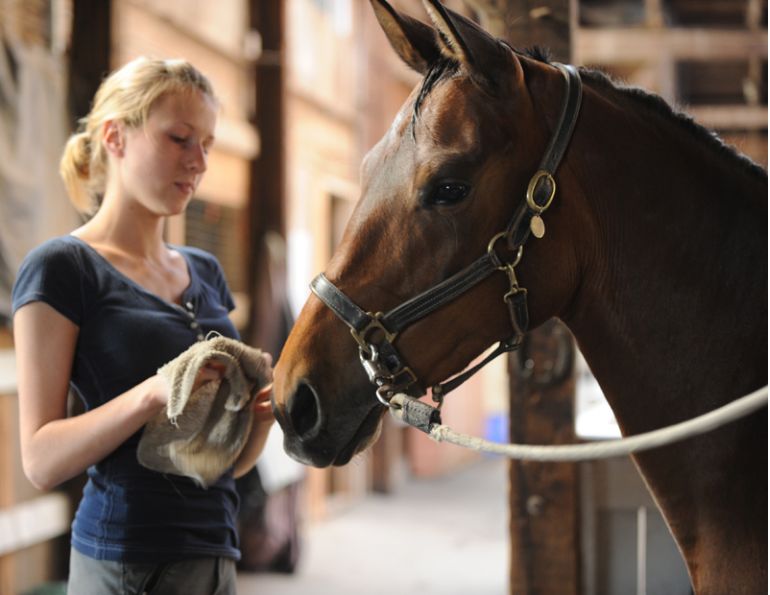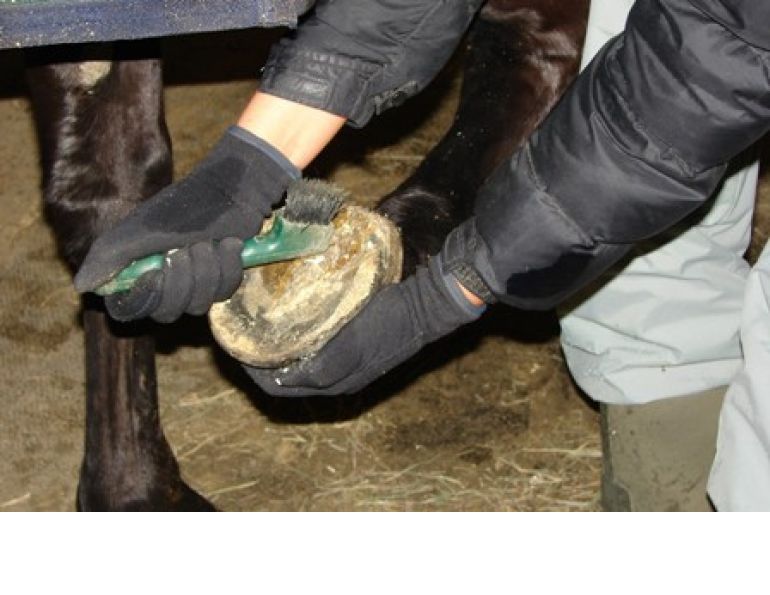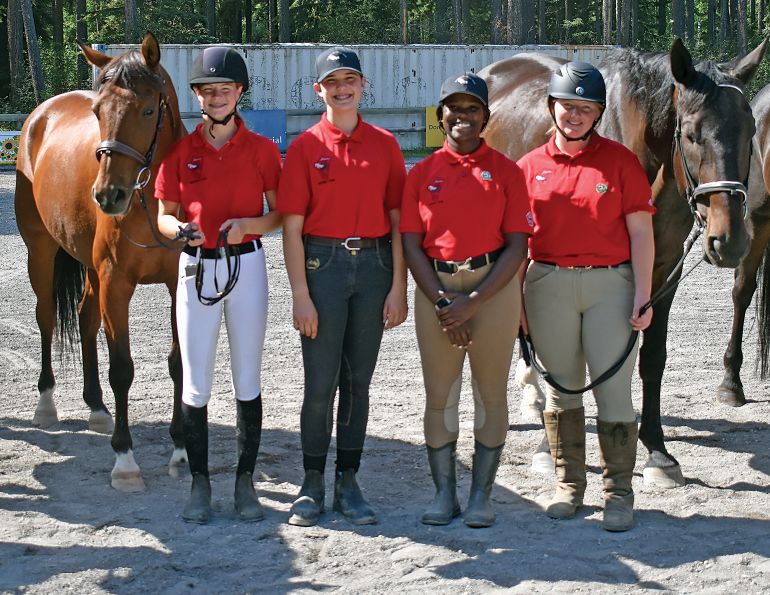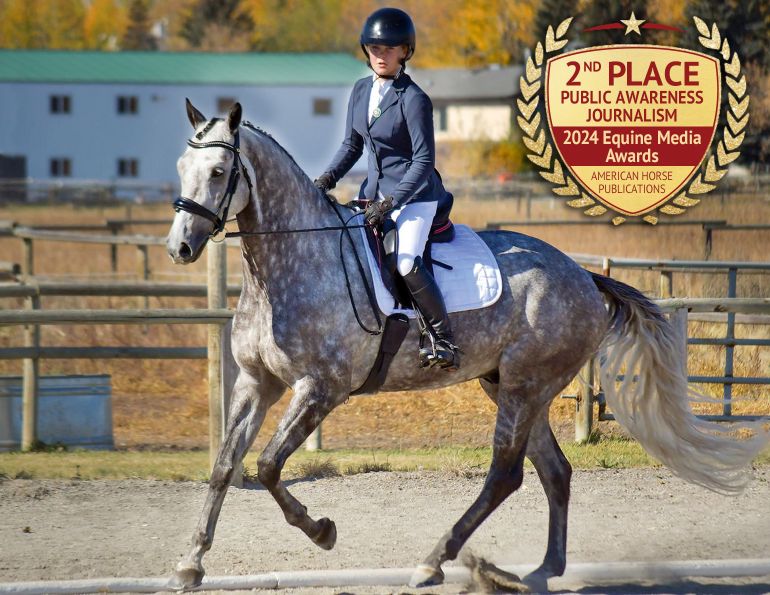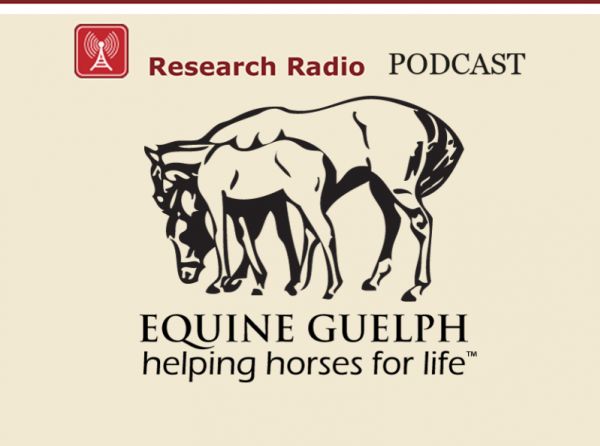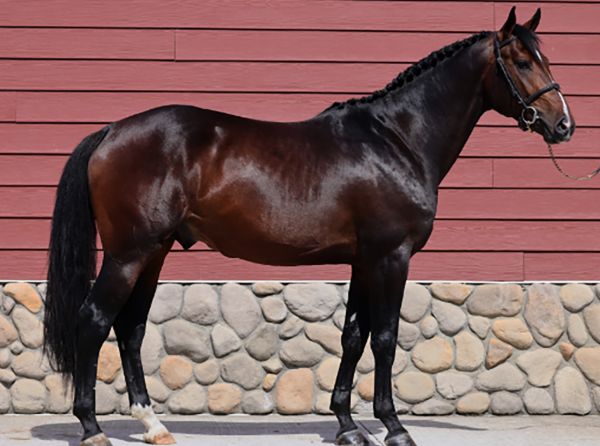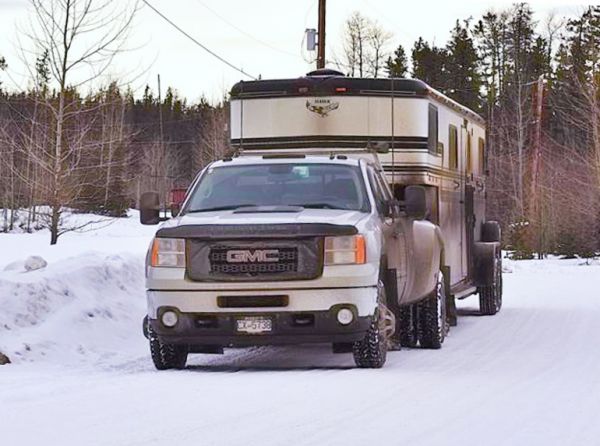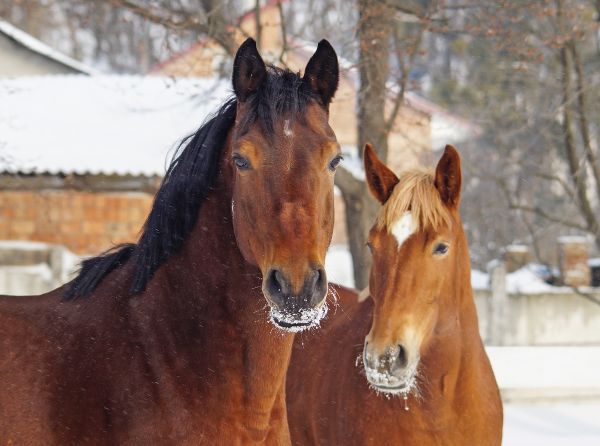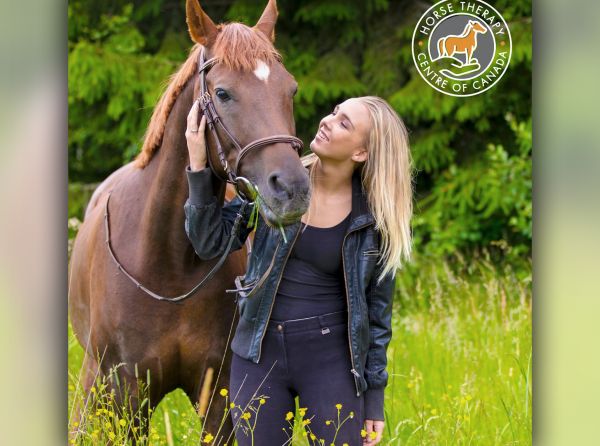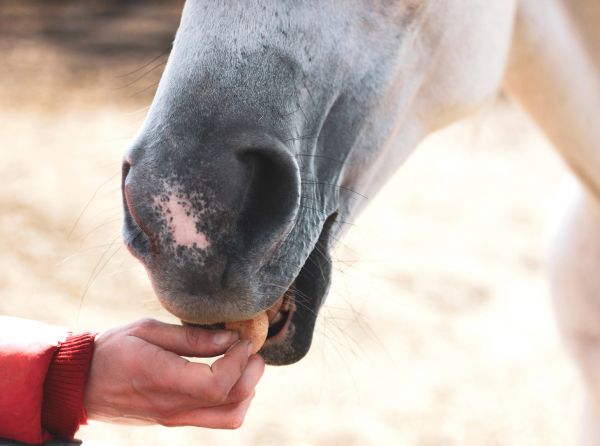By Horse Council BC
Regular brushing, or grooming, is important for your horse. It helps clean his coat, brings out the natural oils, and stimulates circulation. It also gives you a chance to check your horse for any skin diseases, infections, or injuries. A normal horse is neither excessively itchy nor bald.
Grooming is also a great way to build a bond with your horse and learn more about his personality. Be cautious as some horses have very sensitive skin and can be irritated by improper grooming.
Watch for a swishing tail or pinned ears when brushing certain spots; your horse is telling you he is unhappy and wants you to go easy on that spot. Also watch for a stretched upper lip; your horse is telling you that feels good!
|
Basic Grooming Kit |
Things to Include in Your Brushing Kit:
- Rubber currycomb (plastic or metal currycombs are for cleaning brushes – not horses!)
- Dandy brush (medium/hard-bristled brush)
- Body brush (soft-bristled brush)
- Hoof pick and hoof brush (small, stiff brush)
- 2 sponges/washcloths/baby wipes
- Mane comb
Steps to Brushing:
1. The rubber currycomb helps loosen mud and dirt, and brings loose hair and dust to the surface. Use the currycomb in a gentle, circular motion in the direction of hair growth (clockwise on the horse’s left side, counter-clockwise on the right), starting on the horse’s neck and moving across the body toward the hindquarters. Avoid bony areas (like lower legs) and use less pressure on ticklish and sensitive spots (belly, flank, face, etc.).
2. With the dandy brush, brush in the direction of hair growth, flicking the brush in short strokes to take all the loose dust and hair off. The dandy brush can be used to brush the entire leg.
3. Use the body brush in longer strokes following the direction of hair growth. The body brush polishes the coat and is soft enough to use on the entire body.
|
|
4. Work through knots and remove any debris from the horse’s mane with your fingers before carefully using the mane comb. Part the hair and use the body brush to clean the skin and roots of the mane.
5. Clean around the horse’s eyes, nostrils, and muzzle with a dampened sponge or baby wipe.
6. Use a separate sponge or cloth to clean under the dock of the tail.
7. Pick out the horse’s feet with the hoof pick, starting at the back of the hoof and working your way to the front. Be very gentle when cleaning around the sensitive frog (soft, V-shaped tissue in the middle of the hoof). Use a stiff hoof brush to brush out loose debris after all the packed debris is out.
This article was reprinted with kind permission from Horse Council BC, one of the most successful membership driven multi-breed, multi-discipline provincial equine organizations in Canada. Horse Council BC represents the equine community in BC by collaborating with individuals, businesses, and industry professionals to strengthen communication, education, and safety. For more information about Horse Council BC, and access to further equine educational material free of charge, visit them at www.HCBC.ca.
Main Article Photo: Robin Duncan Photography



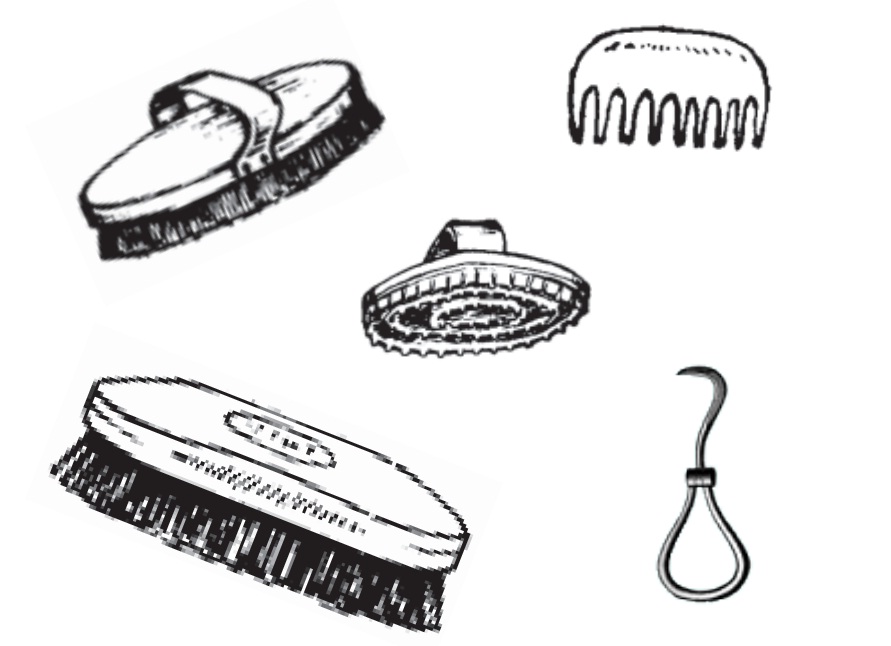
 Pick out the horse's feet starting at the back of the hoof and working your way to the front.
Pick out the horse's feet starting at the back of the hoof and working your way to the front.